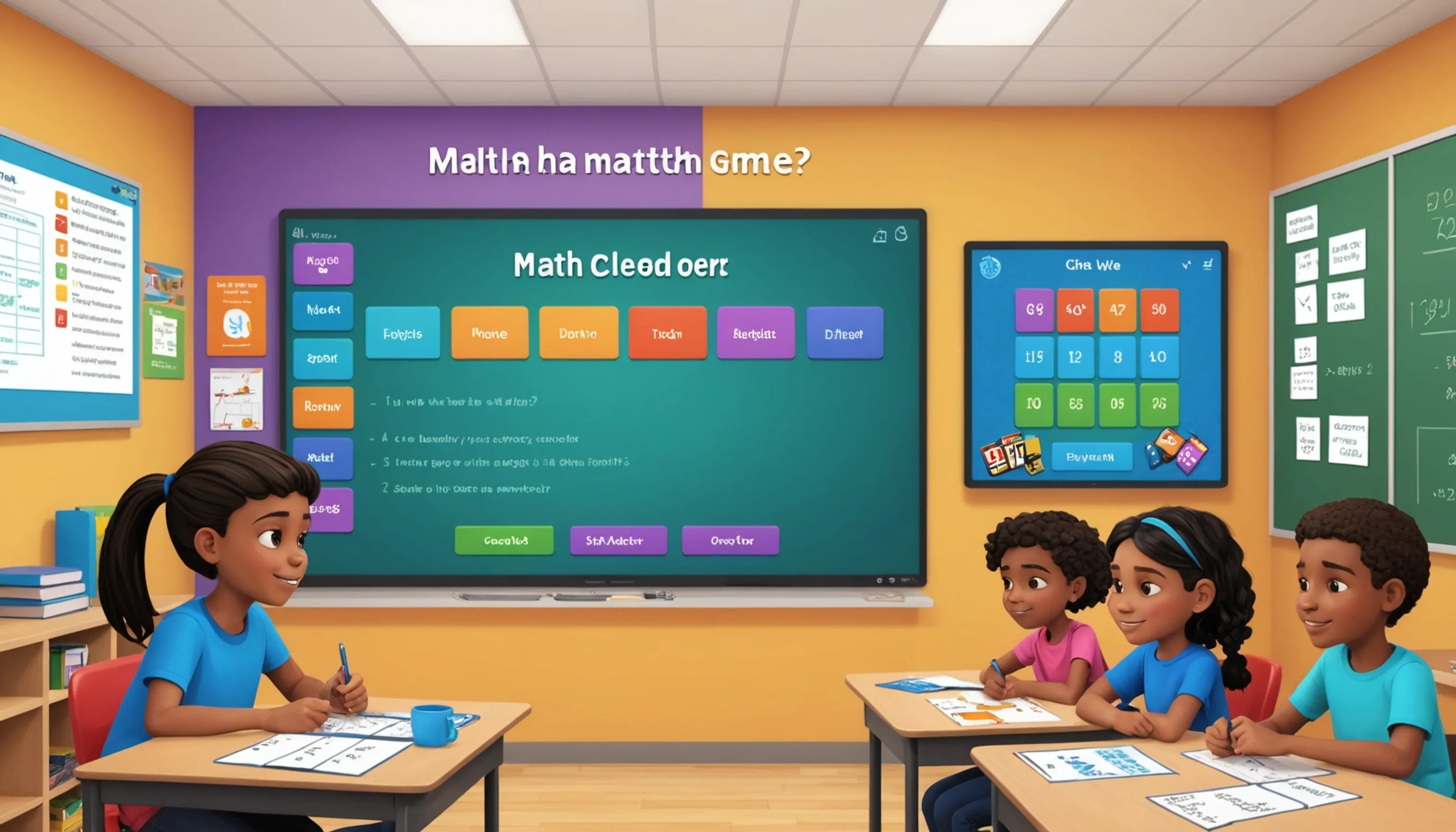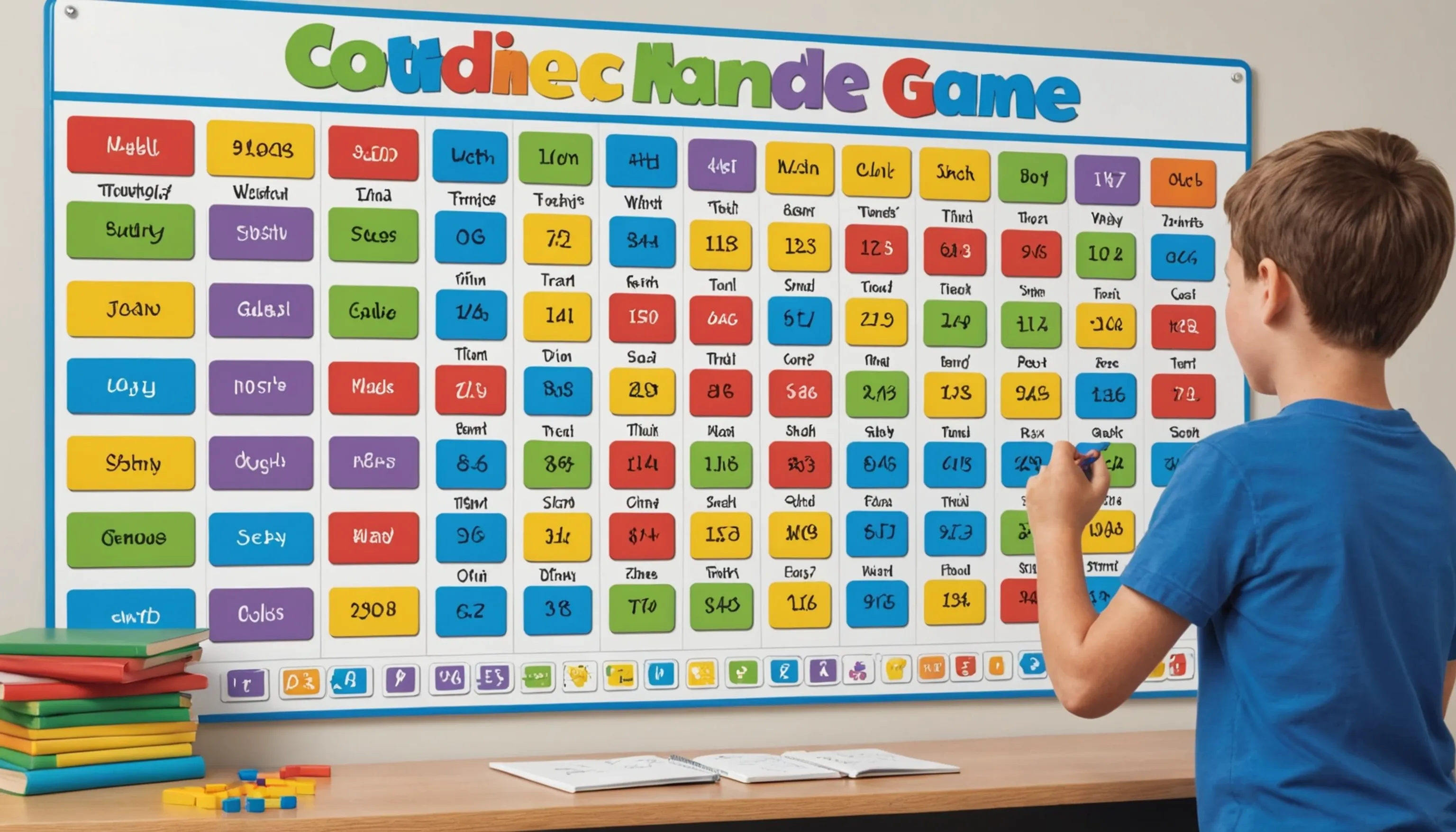Math Games for 6th Grade
 HvWHenry van Wagenberg
HvWHenry van Wagenberg
Engaging Math Games for 6th Graders
Engaging math games for 6th graders are essential for enhancing students' learning experiences. These games can transform traditional math lessons into interactive and enjoyable activities. By using various formats such as board games, card games, or digital apps, students can practice key concepts like fractions, percentages, and geometry in a fun way.
Games like Math Jeopardy and Kahoot! not only foster a competitive spirit but also encourage teamwork and critical thinking. Incorporating these games into the curriculum can significantly boost students' confidence and interest in math.
Benefits of Math Games in Learning
Math games offer numerous benefits in learning for 6th graders, making math both enjoyable and effective. One of the primary advantages is that they promote active learning. Instead of passively listening to lectures, students engage with the material, which leads to better retention of concepts. When children play games, they often repeat the same skills multiple times, reinforcing their understanding.
Moreover, math games can improve problem-solving skills. By facing challenges in a game format, students learn to think critically and develop strategies to overcome obstacles. This experience can translate to improved performance in real-life situations and standardized tests.
Another significant benefit is the enhancement of social skills. Many math games encourage teamwork and collaboration, helping students to communicate effectively and work together towards a common goal. This collaborative environment fosters a sense of community in the classroom.
Additionally, math games can cater to various learning styles. Visual learners may benefit from colorful game boards, while auditory learners can thrive with games that involve discussions. This adaptability ensures that all students can participate and gain from the experience.
Lastly, using games in learning can reduce math anxiety. When students associate math with fun and play, they become more confident in their abilities. This shift in mindset can lead to a positive attitude toward math and lifelong learning.

Popular Math Games for 6th Grade
When it comes to engaging 6th graders in math, several popular math games stand out for their effectiveness and enjoyment. One such game is Math Jeopardy, which combines quiz-style questioning with a competitive format. Students can work in teams to answer questions across various math categories, such as geometry, fractions, and algebra. This not only reinforces their knowledge but also encourages collaboration.
Another favorite is Kahoot!, a digital game-based learning platform where students can answer multiple-choice questions in real-time. With its colorful interface and instant feedback, Kahoot! adds an exciting twist to math practice, making it perfect for classroom settings.
Prodigy Math is an interactive online game that adapts to each student's learning level. As students progress through quests, they solve math problems tailored to their skills, ensuring they remain engaged and challenged. This personalized approach helps build confidence in their math abilities.
Additionally, Math Bingo is a fun twist on the classic game. Instead of numbers, players fill their bingo cards with answers to math problems. This encourages quick thinking and reinforces math facts in a playful way.
Lastly, Flashcard Games can be a simple yet effective way to practice math facts. Students can play memory games or timed challenges to make learning more dynamic.
How to Incorporate Math Games at Home
Incorporating math games at home can be a fun way to reinforce learning outside the classroom. Start by choosing games that match your child's interests, whether it's board games, card games, or digital apps. Set aside a regular game night to create a routine and make math practice enjoyable.
Additionally, consider using everyday situations to introduce math concepts. Cooking can be a great opportunity to practice fractions, while shopping allows for real-world applications of addition and subtraction.
Encourage your child to create their own math games, fostering creativity while reinforcing their skills.

Creating a Math Game Schedule
Creating a math game schedule can greatly enhance your child’s learning experience while making math practice more structured and enjoyable. Begin by assessing how much time your child can realistically dedicate to math games each week. Aiming for at least two to three sessions per week can provide consistent practice without overwhelming them.
Next, choose specific days and times for these sessions. Consistency helps establish a routine, making it easier for your child to anticipate and engage in math activities. You might consider scheduling game time after school or on weekends when there’s more flexibility.
Incorporate a variety of games to keep things interesting. For instance, dedicate one session to a board game like Math Jeopardy, another to a digital game like Kahoot!, and perhaps a third to hands-on activities like Math Bingo or flashcard games. This variety not only keeps your child engaged but also exposes them to different math concepts.
Be sure to involve your child in the planning process. Let them choose some of the games to include in the schedule, which can boost their motivation and interest. You can also set goals for each session, such as focusing on specific skills or concepts, to make the learning experience more targeted.
Lastly, be flexible. If a scheduled time doesn’t work one week, adjust it as needed. The goal is to create a fun and productive environment for learning math.
Using Online Resources for Math Games
In today’s digital age, using online resources for math games can be a fantastic way to enhance your child’s learning experience. Numerous websites and apps offer interactive math games that cater specifically to 6th graders, making learning both fun and effective. Websites like Prodigy Math provide an engaging platform where students can solve math problems while embarking on exciting quests. This not only helps reinforce math skills but also keeps children motivated with its game-like atmosphere.
Another excellent resource is Kahoot!, where you can create custom quizzes or choose from thousands of pre-made games. This platform encourages friendly competition, allowing your child to challenge family members or friends while honing their math skills. The instant feedback feature also helps students understand their mistakes and learn from them.
Additionally, Cool Math Games offers a variety of math-related games that focus on different concepts, from basic arithmetic to more complex topics. These games are designed to be entertaining while providing valuable practice.
To maximize the benefits of online math games, set specific goals for your child. For example, you might aim for them to complete a certain number of games per week or to focus on specific areas where they need improvement, such as fractions or geometry.
Lastly, ensure that screen time is balanced with other activities. Online math games can be a powerful tool in your child’s learning toolkit, but they should be complemented with hands-on activities and traditional learning methods.
Tips for Encouraging Participation
Encouraging participation in math games can be achieved through several effective strategies. Start by making math games a regular family activity, creating a fun and collaborative atmosphere. Celebrate small victories to boost confidence and motivate your child. Allow them to choose games that interest them, fostering ownership of their learning experience.
Incorporate friendly competition, whether against family members or friends, to make the experience more engaging. Use rewards, such as stickers or extra playtime, to incentivize participation. Lastly, emphasize the fun aspect of learning math through games, helping to reduce anxiety and build a positive attitude toward the subject.
Making Math Games Fun and Competitive
Making math games fun and competitive is key to engaging 6th graders and enhancing their learning experience. One effective way to achieve this is by incorporating a variety of game formats that promote interaction and excitement. For instance, consider using team-based games, where students can work in pairs or small groups. This not only fosters collaboration but also adds a social element that makes learning more enjoyable.
Introducing elements of competition can further elevate the excitement. Create a leaderboard to track scores or achievements, allowing students to see their progress over time. For example, you can set up weekly challenges where students earn points for completing math games, solving problems accurately, or improving their scores. Recognizing top performers with small prizes or certificates can boost motivation.
Additionally, you can personalize the competitive aspect by allowing students to challenge each other. For example, they can compete in a friendly game of Math Jeopardy or Kahoot!, where they answer questions against their peers. This encourages them to study and reinforce their understanding of math concepts to perform well in these challenges.
To keep the atmosphere light-hearted, emphasize the enjoyment of learning rather than just winning. Encourage sportsmanship and celebrate everyone’s effort, regardless of the outcome. By blending fun with competition, you can create an engaging environment that fosters a love for math while enhancing essential skills.
Reward Systems for Game Participation
Implementing a reward system for game participation can significantly enhance motivation and engagement in math games for 6th graders. Here are some effective strategies to consider:
- Point System: Assign points for each game played, question answered correctly, or level completed. Accumulated points can be exchanged for rewards.
- Weekly Challenges: Create challenges where students can earn points for specific achievements, such as completing a certain number of games or improving their scores. At the end of the week, reward those who meet the criteria.
- Tiered Rewards: Establish different levels of rewards based on points earned. For example:
- 10 points: Sticker or small prize
- 20 points: Homework pass
- 30 points: Choice of a game to play next
- Monthly Recognition: At the end of each month, recognize students with the highest scores or most participation. This could be in the form of certificates or a small celebration.
- Family Involvement: Encourage family members to participate in the reward system. For instance, they can offer additional rewards for participation at home, promoting a collaborative learning environment.
By creating a structured reward system, you not only motivate students to participate but also make the learning process more enjoyable. Celebrating achievements, no matter how small, fosters a positive attitude towards math and encourages continuous improvement.
